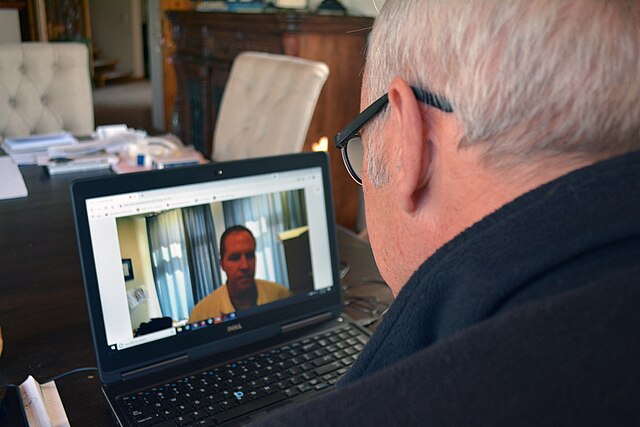When you’ve got a family, city life becomes less appealing. The hustle and bustle, always on, noise, car and light pollution lifestyle can quickly wear thin with children in the picture. Instead of late-night happy hours, you’re looking for nature to explore, fun new activities, and clean air to enjoy it in.
The importance of finding the right place to raise a family shouldn’t be overlooked. You’ll need to think of local schools, useful amenities, and estimated commute times. That’s where Aberdeenshire comes in.
When people think of Scottish cities, they’ll probably think of Edinburgh and Glasgow first. This northeast city is often overlooked, but not only is it full of opportunities, it’s also surrounded by gorgeous towns to raise your children in. Here are some of the best towns to raise your child in Aberdeenshire.
1. Alford
Tucked away by the Cairngorms, Alford is the ideal place for families looking for a strong community while surrounded by stunning scenery. It’s small enough that everyone knows your name (or at least your dog’s), yet big enough to have plenty of convenient amenities. It’s home to the highly rated Alford Academy as well as the Alford Community Campus, which houses a swimming pool, library, and sports hall.
Alford is the perfect town for families who love outdoor adventures. After school, you can take a walk by the River Don, hike through Bennachie, or take a trip to the Grampian Transport Museum. Housing is relatively affordable, and the town’s location—just 25 miles from Aberdeen—makes commuting doable while still enjoying a rural lifestyle. If your family thrives on fresh air, friendly waves, and the occasional Highland cow sighting, make sure to check out local property listings to find your dream home.
2. Banchory
Affectionately known as the “gateway to Royal Deeside,” Banchory offers a perfect blend of small-town charm and upscale living. The schools are excellent, the high street is bustling with shops, and the community is buzzing with energy.
Nature is right on your doorstep with the River Dee and Scolty Hill nearby, but what Banchory is most well known for is its arts and music scene. The Barn is an iconic venue that celebrates an extensive cultural programme, and there’s always something on to enjoy. If your family are artists in the making, look no further than Banchory! The average house price in this area is nearly £300k, so make sure to do some research to find the perfect home.
3. Ellon
Up north, on the other side of Aberdeen, is the small town of Ellon. This riverside town has a lot to offer, including excellent schools, convenient access to the city, and numerous green spaces. The town’s layout is family-friendly, with safe neighbourhoods, modern housing, and a welcoming community that makes it easy to put down roots.
With the Ythan River meandering through town and a host of parks, sports facilities, and local clubs, Ellon encourages kids to stay active and engaged. Plus, it’s home to some excellent bakeries, and as every parent knows, a good scone can be the difference between a tantrum and a triumph.
4. Stonehaven
Looking for coastal charm with plenty of character? Stonehaven might be your seaside soulmate. Famous for its iconic Dunnottar Castle, this town has a real sense of history, but is full of modern amenities. From top-tier schools to refurbished leisure centres, it’s great for kids who want the sea breeze in their hair and for parents who are looking for an easy life.
The beach walks and cliffside adventures you’ll find here will make you wonder why you ever considered raising your family anywhere else. With the average house price of £240k, this could be where your family calls home.
Choose Aberdeenshire for your family
While the final decision depends on your family’s unique rhythm, one thing is clear: Aberdeenshire is packed with towns that are perfect for family life. Whether you crave countryside calm or seaside strolls, there’s a place here with your family’s name on it.
Remember, no town is perfect, but the right one will feel like home. So go on, explore these fantastic family-friendly spots, ask the locals, tour the schools, and see where your next adventure might begin. Because in Aberdeenshire, family life isn’t just possible – it’s thriving.
Best Towns for Raising a Family in Aberdeenshire
When you’ve got a family, city life becomes less appealing. The hustle and bustle, always on, noise, car and light [...]
Looking to the Future with a Family History of Heart Disease
Heart disease is one of the biggest killers on the planet. It takes several lives every year, and people may [...]
Navigating the Digital Marketplace: Selling Handmade Goods Online
Selling handmade goods has never been more accessible, or competitive. Thanks to the rise of digital marketplaces and website creation [...]
Mentor Me Project Manual
A manual to guide and support young refugees interested in cross-border national or European […]
The French government worried about the consequences of COVID on youth mental health
The crisis we are experiencing today is not only health-related, it is also economic and social. This is due to […]
The integration of young refugees: an important work to which international organizations and NGOs are committed.
Youth representing the majority of asylum seekers in UE
Young people are the people who make the most requests for asylums […]
The impact of COVID 19 on the most vulnerable populations, particularly women.
It has now been more than a year since the coronavirus 2019 appeared in Wuhan in Hubei province and then […]



